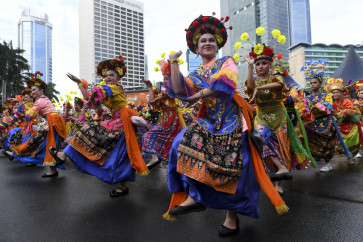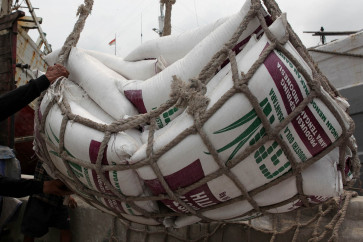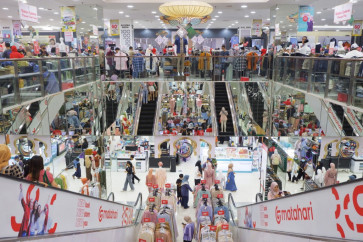Popular Reads
Top Results
Can't find what you're looking for?
View all search resultsPopular Reads
Top Results
Can't find what you're looking for?
View all search resultsYogya fashion week sparks high hopes
At least 58 fashion designers and dozens of artisans are participating in the five-day Jogja Fashion Week (JFW) 2011 at the Jogja Expo Center, an event held to boost the development of the region’s creative industries
Change text size
Gift Premium Articles
to Anyone
A
t least 58 fashion designers and dozens of artisans are participating in the five-day Jogja Fashion Week (JFW) 2011 at the Jogja Expo Center, an event held to boost the development of the region’s creative industries.
Themed “In Vintage”, the event was opened on Wednesday evening with a fashion show presenting the power of past traditions combined with modified popular lines, with batik materials dominating.
Apart from nightly fashion shows, seminars and talks on fashion-related issues, the event will also feature exhibitions presenting the products of fashion industries supervised by state-owned companies.
“Through the annual event, we want to make Yogyakarta an entrance door for fashion in Indonesia,” Lia Mustofa of the event’s organizing committee said on Thursday.
Chairperson of the association of Indonesian fashion employers and designers’ (APPMI) Yogyakarta Branch, Ninik Darmawan, said the strength of Yogyakarta fashion was in its culture and its being a source of creative ideas.
Ninik hailed Yogyakarta as being rich in quality human resources, including many creative people.
“The problem is they are born and develop at their own pace,” she said.
“What we need is a conductor capable of maintaining the rhythm of the creative ideas and together voice the results in harmonious rhythm. Jogja Fashion Week is an instrument to support the development of creative industry in the region,” Ninik said.
The focus of Yogyakarta fashion, according to Ninik, is fashion that is rich in cultural nuances. Fashion and creative ideas in Yogyakarta are different from those in Bandung, West Java, or in Bali, whose focus is more on buyers with boutiques all over the world.
Noted batik designer Afif Syakur agreed, saying that designers were urgently needed in the fashion industry. JFW, he said, was an initial door to interactions between designers and fashion artisans for better synergy.
Citing an example, he said that a synergy had been formed between the two as shown by the production of buttons made from coconut shells.
“Such synergy helps me a lot in producing creative ideas for my products,” said Nurita, the owner of fashion house Omah Klambi, which offers fashion items for special moments and occasions.
Nurita also said that the cultural climate in Yogyakarta was very conducive to the development of the creative industry, but she agreed that it needed time to develop.
Head of the Yogyakarta provincial Industry, Trade, Cooperatives and Small Enterprises Astungkoro, said that the synergy created between fashion designers and artisans was obligatory.










